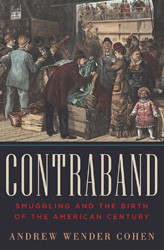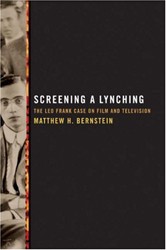Discussions of American Jewish life have tended to focus on major cities. While such places are important, our understanding of the evolution and the nature of Jewish life is greatly handicapped when we overlook life, culture and institutions in smaller towns like the “triple digit Jewish communities” Weissbach studied, and in regions like the South, the subject of McGraw’s book. Since Jewish life in the South was especially concentrated in small towns, the content of the books overlaps even though their perspectives and methodologies differ.
Our view of Jews as an urban people concentrated in a few large cities is relatively recent. Many European Jews lived in rural areas until the late 19th century, and the number of Jews in small towns in the U.S. less than 50 years ago was not inconsiderable. A large number of the Jewish students I encountered 40 years ago as a graduate teaching assistant at the University of Pennsylvania came from small towns, and were attending the University’s Wharton School of Business in preparation to work in family businesses, often dry goods or jewelry stores. Indeed, a study conducted in the mid-20th century of 168 Jewish communities with populations less than 1,000 people revealed that two thirds of employed Jews were “owners and managers of businesses,” eight in ten of whom were in retail or wholesale businesses.
Weissbach’s Jewish Life in Small-Town America does a fine job of drawing on voluminous historical and demographic data, including data from manuscript censuses, to study life in 490 small towns. The book describes nearly a dozen ‘patterns’ in these communities, including patterns of culture, organizational life, family life, livelihood, class, stability and mobility. Weissbach elaborates on the complex and ambiguous position of Jews in these places: they were far more integrated into the life of their towns than Jews in large cities were, but remained outsiders. Their position was especially distinctive in the South, where Jews tended to be more trusted than white gentiles. Some patterns were not so different in small towns and cities: the sequence of organizational development was the same and they all had synagogues, benevolent societies and burial societies. A major difference was the sense of generational discontinuity. Whereas in Germany and other parts of Europe families could trace back their ancestors for hundreds of years in the small towns where they lived, there was much more transience in the United States. Eli Evans pointed out in a documentary film called Delta Jews, quoted in McGraw’s book, that “The story of Jews in the South is that of fathers who built businesses for the sons who did not want them.” This observation has a broader significance: Weissbach points out that small-town Jewish life in America was typically a one or two generation affair. He points out that “It was not only the continual arrival of people from elsewhere, however, that kept the blend of individuals and families in America’s small Jewish communities almost constantly in flux. Just as important for the dynamic demographic history of these settlements was the constant departure of Jewish residents. In many cases, even individuals who were counted among the founders of their communities or among their most prominent members did not remain in their towns permanently.” This resulted in the disappearance of about half of the communities he studied and the integration or absorption of others, like Englewood, New Jersey, into larger metropolitan areas.
These communities were settled in part by ‘chain migration’ where residents served as magnets, attracting relatives and close friends to an area. Other people were sent by the Industrial Removal Office, in an effort to reduce poverty by reducing the concentration of Jews in large cities. In the first two decades of the 20th century, the IRO placed 75,000 people; fully half of the nearly 500 towns discussed in this book received residents through this program.
McGraw’s Two Covenants draws on a different type of evidence, literature by and about Southern Jews. Utilizing the concepts and tools of postmodern literary analysis, McGraw is interested in the hybridity of Southern Jews, the sense of being an ‘Other’ in an area of the country whose life and culture was marked by so many complexities and contradictions, especially with regard to the status of African Americans. Some of her examples are interesting and important — the work of Alfred Uhry who wrote Driving Miss Daisy, and Lillian Hellman, as well as the lesser known but nonetheless emblematic writer, David Cohn. Other examples, such as a chapter analyzing the significance of the ownership of Monticello by two Southern Jews who spent most of their time in the North, are not as strong.
Both books point to a need to further explore an important dimension of American Jewish life. They raise important and provocative questions and map out issues that merit future study.




